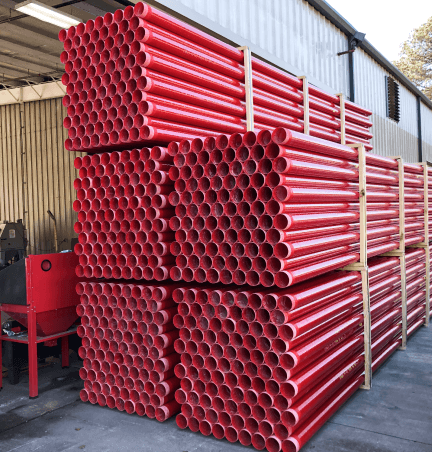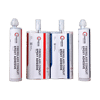Thermal grouting of trenchless/jack and bore (steel casing) applications is a highly specialized process and should only be attempted by a certified, capable grouting specialist contractor with proven experience in similar installations. The thermal grouting process has many detailed procedural considerations that must be thoroughly understood, reviewed, and implemented prior to undertaking the grouting process. Any failure to fully review and understand those procedures could result in significant damage to and/or collapsing of the conduits.
Trenchless applications offer many opportunities to develop around existing infrastructure and buried networks. The complex nature of these applications also present greater challenges, which can lead to project failure if not mitigated correctly. Risks should be considered on a project-by-project basis, and evaluated at every step of the procedure. A proactive approach is key in managing risk factors—that’s why Champion Fiberglass has put together this list of top considerations and “what-to-knows” designed to supersede human error and site-condition-related mistakes when using our fiberglass conduit for trenchless applications.
1. GROUTING CONTRACTOR EXPERTISE
The importance of working with an experienced grouting contractor can’t be stressed enough. Because these state-of-the-art applications require special consideration at every step, the grouting contractor must be familiar with and completely understand all aspects of:
- Jack and bore
- Microtunnel
- Horizontal Directional Drilled bores (HDD)
- Auger bore
- Any other applications where either hydrostatic or dynamic grout pressure can occur
2. RISK MANAGEMENT DURING TRENCHLESS PROCEDURES
A properly designed and executed grout plan should be established prior to any grouting. Having a qualified trenchless grouting specialist assist on even the smallest projects can prevent major headaches. These are a few of the critical in-process considerations:
- The grouting contractor must completely understand the buckling pressures of the RTRC conduit when pumping or pouring grout.
- A congested bore will restrict grout flow and may require higher grouting pressures, or a more fluid grout, than an open, less congested bore.
- In trenchless applications, grout is pumped into a sealed environment. Vents should always be installed at both ends, regardless of trench pitch, and should be sized at the same or larger diameter than the injection pipe.
- Grouting is best performed from the high side of a jack and bore, utilizing the longest sacrificial grout pipe and working upwards with subsequently shorter pipes. In level short bores, an experienced grout specialist may utilize a single mid-span grout pipe.
3. PROPER USE OF ADMIXTURES
Any grout, be it cellular, flowfill, or thermal, should be designed by someone experienced in trenchless applications. Additionally, you should know:
- Most calls to the ready-mix company for a pumpable grout will not deliver the correct mix for this situation.
- A pumpable grout does not need to be flowable; and a flowable grout may not be pumpable. Trenchless grouting applications need both.
- The proper use of concrete admixtures can significantly improve the performance of all cementitious grouts. The use of super-fine sand in cementitious grouts can extend pumping distances to thousands of feet and fill a casing and/or be used in tight bundle configurations.
4. PRESSURE AND TEMPERATURE CONCERNS
The pump operator must be aware of grout line pressure at all times and understand what the gauge is indicating.
- Grout line pressure must be monitored at the point of injection. The pressure gauges on the concrete pump are not sufficient. Back pressure, not line loss pressure, is what can damage conduits.
- In trenchless grouting, maximum pressure occurs during the grouting operation, yet maximum temperature from heat of hydration occurs many hours later.
- Inclined Jack and Bores are exposed to increased hydrostatic head pressure as well as dynamic pumping pressure.
5. ADDITIONAL CONSIDERATIONS
- As a general rule, all RTRC or PVC conduits should be filled with water prior to pumping and pressurized where grouting pressures could potentially damage the conduits.
- A grouting contractor should be aware of the use of conduit spacers and their grout flow capabilities inside of the casing. A properly designed spacer will feature sacrificial grout pipe holes and more flow area than a poorly designed spacer.
This information is intended for use as a guideline only. Champion Fiberglass is NOT a thermal grouting contractor, nor does it represent itself as such. If you have concerns or need additional information regarding this specialized grouting process, please contact Champion Fiberglass.












